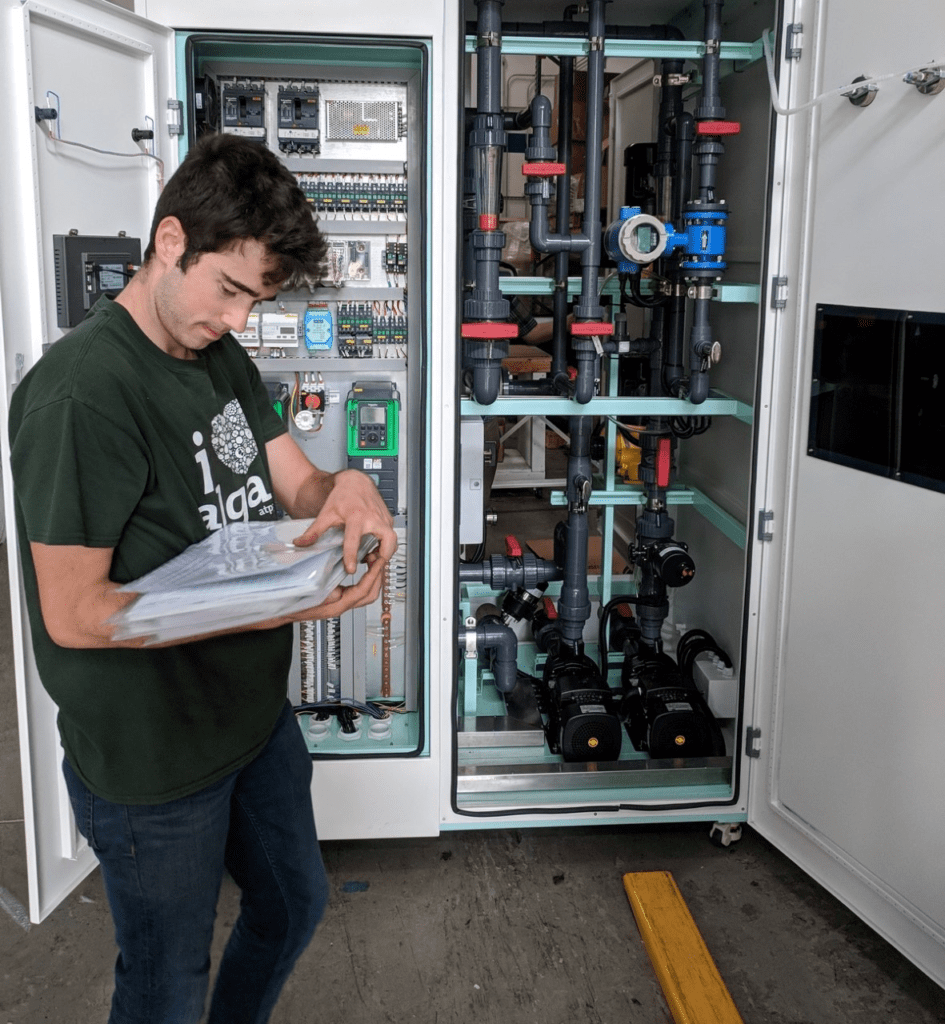Teaching students how to boost California’s water supply and recover resources from wastewater is the aim of the SURE! Research Station.
Cal Poly Environmental Engineering Professor Tryg Lundquist has a simple explanation for what happens at the Sustainable Utilities Research and Education (SURE!) Field Station located at the City of San Luis Obispo wastewater treatment plant.
“Dirty wastewater goes in and at least three good things come out: clean water for reuse, recovered fertilizer nutrients, and biofuels,” he said. “And in the near future, bioplastics.”
Lundquist said many communities in the arid west, including the City of San Luis Obispo, are working to implement a “waste not” concept for water supply resiliency and environmental sustainability. In fact, the City’s new wastewater plant is called the “Water Resources Recovery Facility” (WRRF), which aligns with the goals of SURE! The City is allowing Cal Poly to use a corner of the WRRF property for the new Research Station, and the giant international firm Jacobs Engineering Group has provided design support. A “nanobubble” pilot project to increase the amount of purifying oxygen in wastewater was completed last year, and now, a new project at the site, funded by the California Energy Commission, is developing an energy efficient wastewater recycling technique.
“This two-year project uses microscopic green algae to clean the water,” said Lundquist. “The study involves half of the 20 biological treatment tanks. Each 260-gallon tank is fed a small stream of wastewater. Naturally occurring algae cultures are grown in each tank in a series of experiments.”
Lundquist said the algae absorb waste nutrients and release oxygen as they photosynthesize and grow. In this way, they treat the wastewater using solar energy.
“The algae tanks are like biological solar panels,” said Lundquist. “The solar oxygen production greatly decreases the electricity use needed in conventional mechanically-oxygenated wastewater treatment processes. The algae biomass can be used to make biofertilizer. In this way, wastewater nutrients are recovered, offsetting fossil fuel use to manufacture chemical fertilizers.”

Lundquist, who typically engages about 50 students per quarter to work on research, said nature-based water treatment practices have a significant financial benefit for California cities. “This is perfect for water treatment in small communities,” he said. “Current water recycling processes cost more than some communities can afford. If successful, this project might lead to more widespread water recycling in California — a drought resilience capability the state needs.”
Lundquist said projects at the research station demonstrate CO2 utilization, a climate-friendly way to make products.
“Using exhaust gas for example, CO2 is added to the tanks to accelerate algae growth,” he said. “Clean water is used in these experiments to grow algae containing omega-3 fatty acids, which can replace fish meal in animal feed, possibly helping to reduce pressure on depleted fisheries.”
To leverage the research funding to benefit students from all science and engineering majors, Lundquist said each quarter the Civil and Environmental Engineering Department offers ENVE 405, which allows students to learn and practice research methods and water quality testing procedures.
“Students like to contribute to real projects of importance to research agencies and utilities, and the experience is often a highlight on the resumes of new graduates,” he said. “Engaging this large number of students in research is possible thanks to professional research staff, who are supported by the research contracts.”
Sara Leader, an analytical chemist on the SURE! staff, said Cal Poly’s emphasis on Day-One Ready graduates is also reflected in the program.
“We introduce freshman to the graduate student experience,” said Leader. “We want Cal Poly graduates to be experienced in resource science and infrastructure so they can be immediately valuable in the organizations that manage the resources our society depends on.”
Lundquist said the SURE! program has space and capacity for more projects with utilities, equipment vendors and agencies. He would also like to increase the public education activities of SURE!


